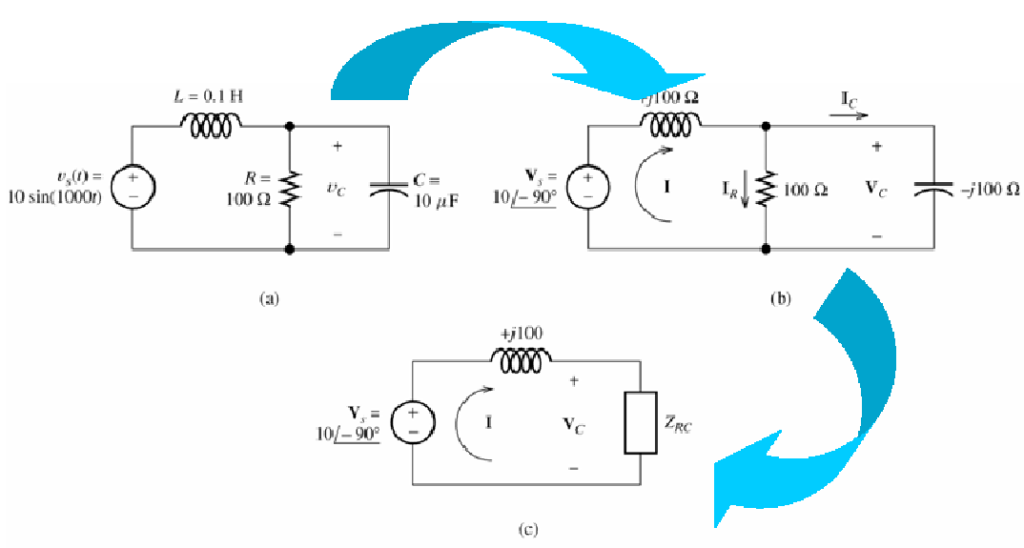Cracking the Code of Impedance in an AC circuit
Hey there! Are you ready to dive into the exciting world of electrical impedance? No worries if you’re not an electrical genius – we’re gonna break it down together. So, grab your virtual hardhats and let’s get started!
AC Circuits and the Puzzle of Impedance
Alright, so AC circuits are like the rockstars of the electrical world. AC stands for “alternating current,” and it’s the type of electrical current that oscillates non-stop similar to waves in an ocean. But wait, there’s a twist! Impedance is the resistance that restricts the AC current flow.
What’s Impedance?
Hold onto your headphones, because impedance is like the gatekeeper of the AC circuit party. It’s not just resistance; it’s a combo of resistance, reactance, and a dash of frequency magic. Think of it as the VIP section – it decides how much AC current can flow.

Real vs. Complex Impedance
Real impedance is straightforward and involves just resistance which impedes current by dissipating energy. Imaginary or complex impedance incorporates reactance (inductive or capacitive) which takes into account how elements store or resist energy due to frequency changes. In other words the imaginary part (reactance) impedes current by storing energy in electric/magnetic fields.

Impedance and Short/ Open Circuit Current Equation
The Thevenin impedance equals the open-circuit voltage divided by the short circuit current.

The Thevenin voltage is equal to the open-circuit phasor voltage of the original circuit
We can find the Thevenin impedance by zeroing the independent sources and determining the impedance looking into the circuit terminals.
What is difference between impedance and resistance?
Resistance is a measure of opposition to the current flow of electrical DC electrical circuit. Impedance, on the other hand, is a measure of the opposition to the current flow due a AC RCL circuit.
Why impedance is greater in AC rather than in DC?
The AC resistance is more than the DC resistance because the oscillations in the AC waveform. This causes the alternating current flowing through the conduct
What is the impedance of the Thevenin & Norton equivalent circuit?
The impedance of Thevenin and Norton equivalent circuits, used to simplify complex networks, is a single value that represents the combination of all resistances, reactances, and sources in the circuit. It captures the behavior of the original circuit as seen from its output terminals.

Example of TEC

The Resistance Riddle
Okay, let’s break down the resistance part. Imagine you’re at a water park . The water slides are like the wires, and the resistance is how narrow or wide the slides are. Wider slides let more water (or current) flow easily, while narrower slides slow things down. In AC circuits, resistance resists the flow of current, but it’s only part of the impedance puzzle.
The Dance of Reactance
Now, let’s talk about reactance. This is where things start to groove. Reactance comes in two flavors: inductive and capacitive. Inductive reactance is like a dancer spinning with a long scarf – it resists changes in current. Capacitive reactance, on the other hand, is like that friend who’s always ready to join a conga line – it stores and releases energy. Both inductive and capacitive reactance add some flair to our impedance formula.
The Frequency Funk
We can’t forget about the effect of frequency. You know how some songs hit different on different dance floors? Well, frequency does the same for AC circuits. It’s like the beat of the music – the higher the frequency, the faster the current changes direction. And guess what? Impedance gets jiggy with frequency. As frequency changes, impedance can either get higher or lower, influencing the current flow.
The Impedance Equation
Now that we’ve got our AC circuit elements down, let’s put the pieces together. The impedance formula is like our secret handshake: Z = √(R² + (Xl – Xc)²).

Z is impedance, R is resistance, Xl is inductive reactance, and Xc is capacitive reactance. It’s like solving a puzzle to find out how much the circuit resists the AC current.
Sample exercise
Simply the circuit

The Big Picture: Applications of Impedance
Let’s zoom out for a sec. Impedance isn’t just a brain-teaser; it’s super practical especially for maximum Power Transfer. Impedance is the reason why you can adjust the bass on your speakers or why your smartphone charger doesn’t blow up your phone. Electrical engineers use impedance to design circuits that work smoothly with AC power sources, making sure everything plays nice in the electronic playground.
Conclusion
Alright, friends, we’ve tackled the AC circuit dance floor and uncovered the mysteries of impedance. Remember, impedance isn’t something to fear – it’s like the beat that keeps the electrical party going. With resistance, reactance, and frequency as our backup dancers, we’ve cracked the code to understanding AC circuits.







